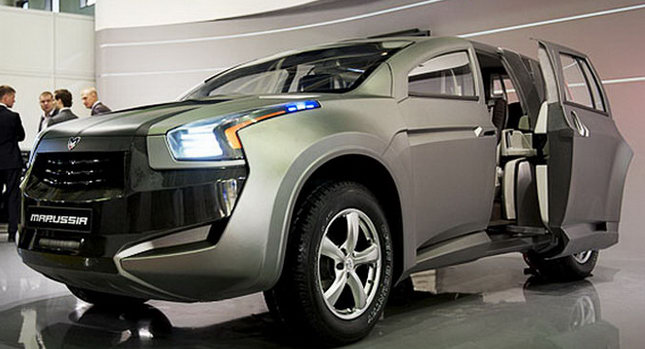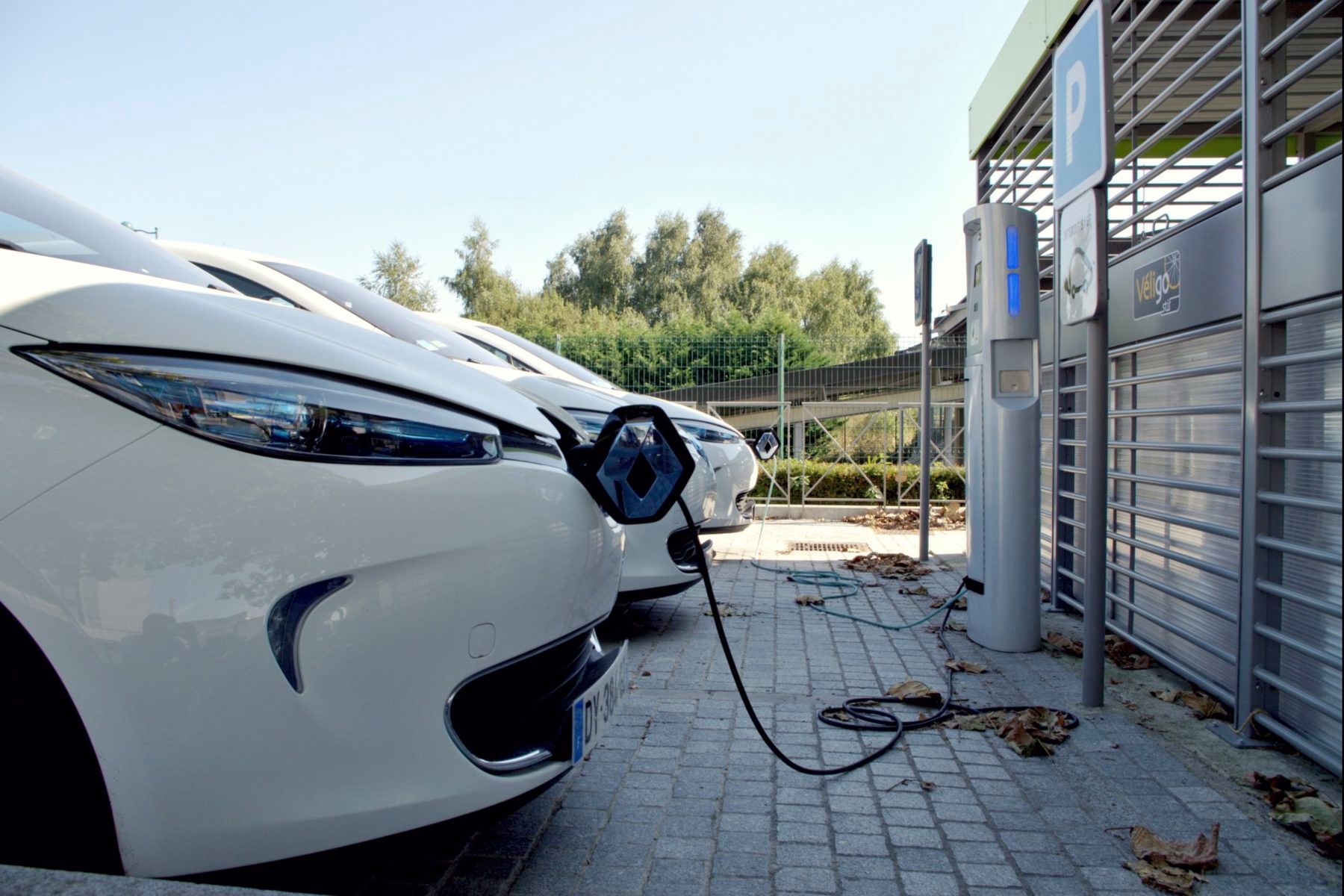
The automotive landscape is rapidly evolving, with a significant push towards electrification and hybrid powertrains dominating many discussions about fuel efficiency. However, for a considerable segment of buyers, the appeal of a traditional internal combustion engine car remains strong. This could be due to a preference for straightforward mechanics, a desire for lower purchase prices, or simply an aversion to the added complexities often associated with electrified vehicles, such as regenerative braking systems.
For these discerning consumers, the good news is that advancements in internal combustion engine technology have not stalled. Automakers continue to innovate, refining engines, transmissions, and aerodynamic designs to squeeze every possible mile per gallon from gasoline-only powertrains. This persistent engineering effort means that achieving excellent fuel economy without relying on electric assistance is not only possible but increasingly accessible.
Our in-depth analysis delves into the top contenders for 2025, showcasing the non-hybrid cars that stand out for their exceptional fuel efficiency. These vehicles prove that you don’t need a battery pack or an electric motor to significantly reduce your fuel costs, offering a practical and economical choice for everyday driving. We’ve rigorously examined their specifications, real-world implications, and overall value to help you make an informed purchasing decision and find the most suitable option for your needs.

1. **2025 Honda Civic (36 mpg)**The 2025 Honda Civic proudly takes its place at the top of our list, demonstrating that achieving outstanding fuel economy doesn’t necessitate a hybrid powertrain. Tying with the Hyundai Elantra for the highest combined MPG, the base Civic truly distinguishes itself through a sophisticated blend of slick aerodynamics and state-of-the-art engine technology. All of this comes in a package starting under $26,000, presenting remarkable value for its segment, especially when considering its comprehensive capabilities.
What truly elevates the Civic above much of its competition is its comprehensive excellence across multiple critical automotive facets. It offers impressive interior space and generous trunk capacity, rivalling vehicles from a size class up, making it highly practical for both passengers and cargo. The engine refinement contributes to a smooth and comfortable ride, enhancing the overall passenger experience. This vehicle is designed not just for efficiency but for a superior daily commute, balancing comfort and utility effortlessly.
Beyond its practical dimensions and refined powertrain, the Civic delivers exceptional handling dynamics. It corners with an agility and precision that one might expect from a much more expensive car, providing a genuinely engaging driving experience that enthusiasts appreciate. This blend of performance and practicality is a hallmark of Honda engineering, ensuring driver satisfaction. The base model is equipped with a 2.0-liter 4-cylinder engine, producing 150 horsepower and 133 lb-ft of torque.
Combined with its efficient design, this powertrain yields an impressive 32 mpg in the city and 41 mpg on the highway, culminating in a 36 mpg combined rating. While some might find it noisy inside or consider its pricing towards the higher end of the segment, with its “best features limited to higher trims,” the Civic remains a well-thought-out interior space with good handling, available in both sedan and hatchback styles, providing versatility for various consumer preferences.
Car Model Information: 2024 Honda Civic EX-L
Caption: 2024 Honda Civic liftback
Manufacturer: Honda
Aka: ubl
Production: 1972–present
Class: Subcompact car
BodyStyle: fastback,Sedan (automobile)
Layout: Front-engine, front-wheel-drive layout,Front-engine, four-wheel-drive layout
Predecessor: Honda N600,Honda Z600
Categories: 1980s cars, 1990s cars, 2000s cars, 2010s cars, 2020s cars
Summary: The Honda Civic is a series of automobiles manufactured by Honda since 1972. As of 2023, the Civic is positioned between the Honda Fit/City and Honda Accord in Honda’s global passenger car line-up. It is one of the best-selling automobiles in history, with over 27 million units sold through 2021. The first-generation Civic was introduced in July 1972 as a two-door fastback sedan, followed by a three-door hatchback that September. With a 1,169 cc transverse engine and front-wheel drive, the car provided good interior space despite its small overall dimensions. Initially gaining a reputation for being fuel-efficient, reliable and environmentally friendly, later iterations have become known for performance and sportiness, especially the Civic Si, SiR, and Type R versions. It is currently in its eleventh generation, which has been produced since 2021. The Civic has often been rebadged for international markets, and it served as the basis for the Honda CR-X, the Honda CR-X del Sol, the Concerto, the first generation Prelude, the Civic Shuttle (which later became the Orthia) and the CR-V (which in turn was used as the basis for the Honda FR-V).
Get more information about: Honda Civic
Buying a high-performing used car >>>
Brand: Honda Model: Civic
Price: $25,080 Mileage: 31,016 mi.
Read more about: The Ultimate 2025 SUV Fuel Economy Showdown: How Top Models Perform on Long-Distance Journeys
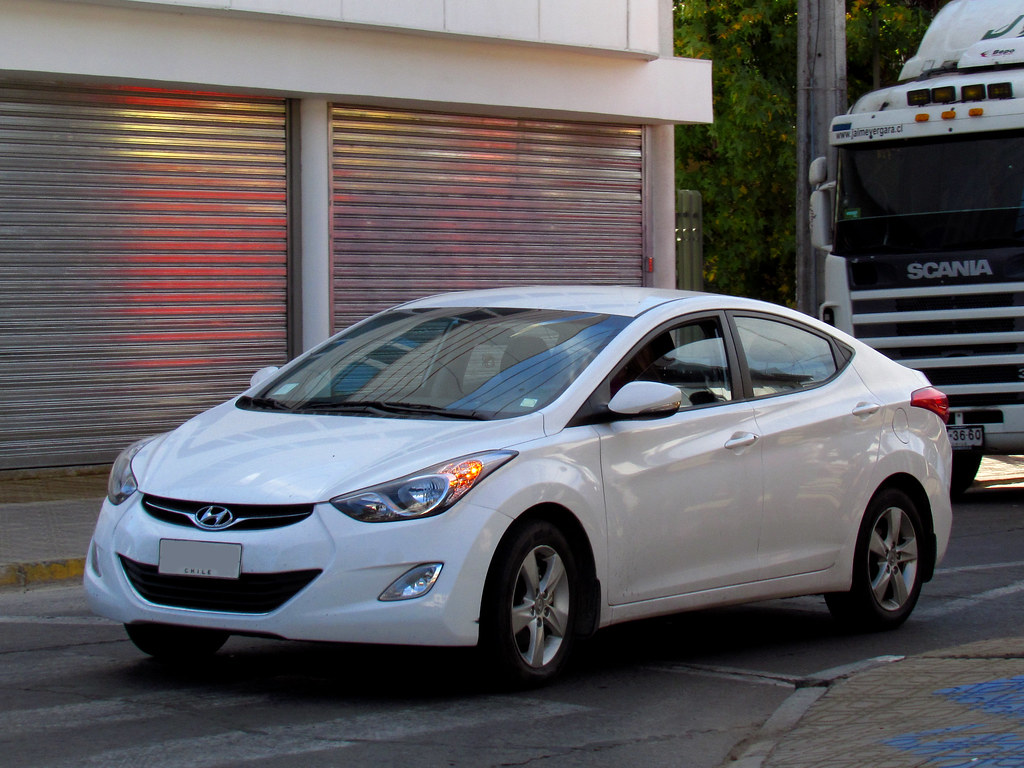
2. **2025 Hyundai Elantra (36 mpg)**Entering the competitive compact sedan arena, the 2025 Hyundai Elantra presents a compelling option, tying with the Honda Civic for the highest non-hybrid combined fuel economy at 36 mpg. This vehicle is instantly recognizable by its sharply daring sheetmetal, giving it a distinctive and modern aesthetic that truly stands out on the road. It skillfully combines this striking visual appeal with remarkable fuel efficiency, making it a strong contender for value-conscious drivers prioritizing both style and economy.
Hyundai is renowned for delivering exceptional value, and the Elantra is no exception. It comes packed with an impressive array of standard safety features and cutting-edge technology, offerings that often seem to reach “to the moon and back” when compared to rivals in its price bracket. This comprehensive feature set at an accessible price point ensures that buyers receive significant value, elevating the daily driving experience without straining the budget and providing peace of mind.
Underneath its rakish looks and advanced driver assistance systems, the Elantra is powered by a 2.0-liter 4-cylinder engine, generating 147 horsepower and 132 lb-ft of torque. This powertrain achieves stellar fuel economy figures of 32 mpg city and 41 mpg highway, underscoring its commitment to efficiency. The “updated looks” and “great safety scores” are notable pros, reflecting a modern and secure vehicle.
While the powertrain and chassis might not always match the lofty standards set by the absolute best in the segment, often described as a “gritty and slow engine,” the Elantra compensates with generous legroom and overall interior space. These factors help to make up for any perceived lower grades in performance, ensuring a comfortable and practical ride for occupants. Its attractive starting MSRP of $23,025 further solidifies its position as a value-packed, efficient choice, though some users identify “some evident cost-cutting” and suggest the Civic is still a superior option in certain aspects.
Car Model Information: 2022 Hyundai ELANTRA N Line
Name: Hyundai Elantra/Avante
Manufacturer: Hyundai Motor Company
Aka: Hyundai Avante,Hyundai Lantra (1990–2000, Australia and Europe),Hyundai i30 Sedan (2020–present, Australia)
Production: 1990–present
Class: Compact car
Layout: Front-engine, front-wheel-drive layout
Predecessor: Hyundai Stellar
Categories: 2000s cars, 2010s cars, 2020s cars, All Wikipedia articles written in British English, All articles with bare URLs for citations
Summary: The Hyundai Elantra, also known as the Hyundai Avante, is a series of compact cars produced by the South Korean manufacturer Hyundai since 1990. In South Korea, the first-generation model was initially sold under the “Elantra” nameplate, but starting from the second-generation, Korean models were sold under the “Avante” nameplate, with the “Elantra” name continue to be used on export models. The “Avante” name is not used in most export markets due to its similarity with Audi’s “Avant” designation, used for their station wagon models. As of 2018, Singapore is the only export market outside South Korea to utilize the “Avante” name. In Australia and some European markets, the Elantra was initially marketed as the Lantra during its first two generations, due to the similarly named “Elante” trim for the Mitsubishi Magna in the former market, and the Lotus Elan in the latter. After Mitsubishi Motors Australia Limited (MMAL) dropped the “Elante” trim from the Magna range, and Lotus ceased production of the Elan in 1995, Hyundai standardized the “Elantra” name for both Australian and European markets in 2001, following the introduction of the third-generation model. The first-generation model was also sold as the Bimantara Nenggala in Indonesia between 1995 and 1998. Since the seventh-generation, the “Elantra” name was retired in Australia, when Hyundai intergrated it into the i30 range, badging it as the i30 Sedan.
Get more information about: Hyundai Elantra
Buying a high-performing used car >>>
Brand: Hyundai Model: Elantra
Price: $20,590 Mileage: 50,794 mi.
Read more about: The 14 Most Fuel-Efficient Cars of 2025: Expert Insights to Save You Thousands Annually
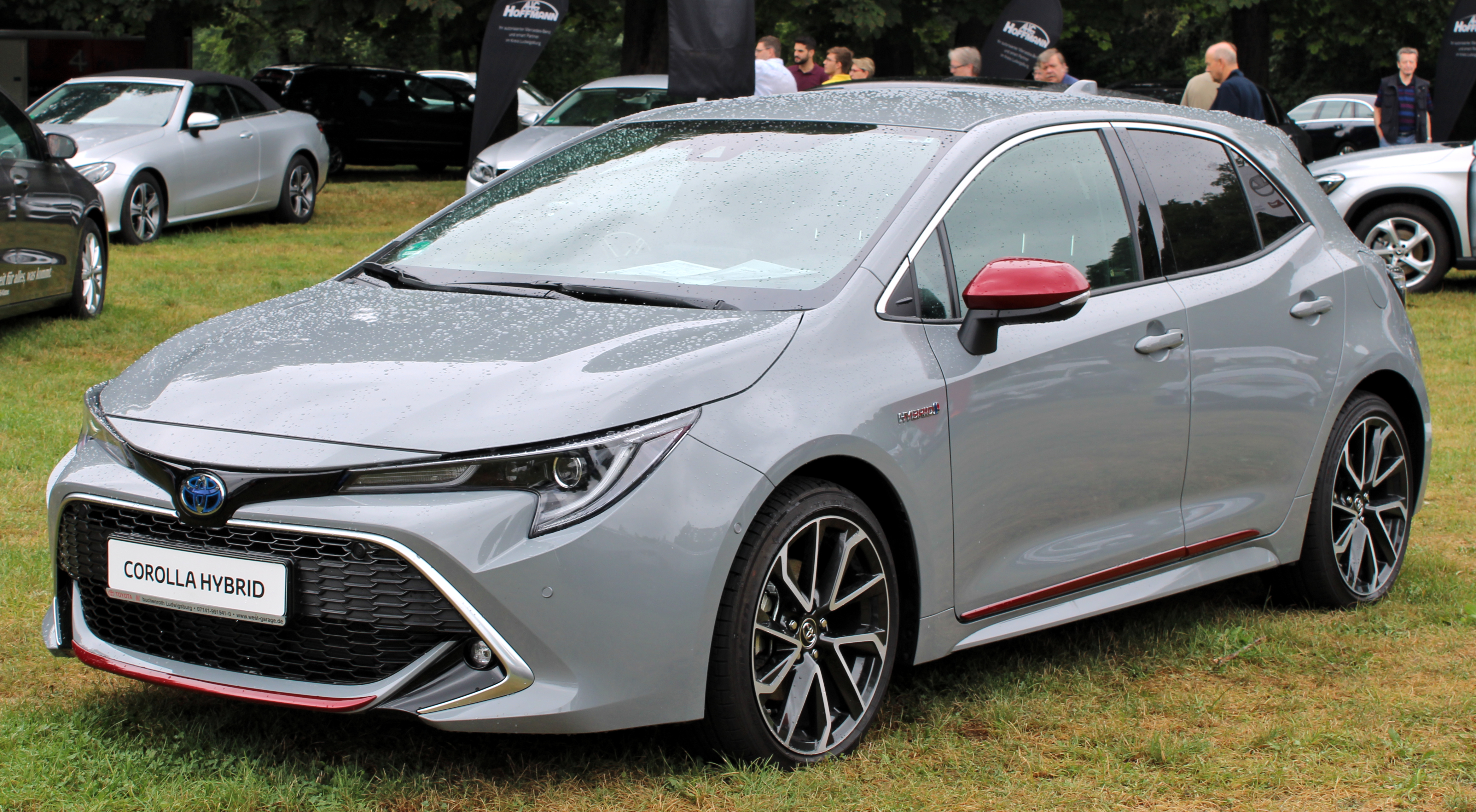
3. **2025 Toyota Corolla (35 mpg)**For millions of drivers, the 2025 Toyota Corolla represents a benchmark in dependable, economical transportation, and for good reason. It stands as a pragmatic choice for those seeking to minimize their expenditure on a new, reliable car. With highway fuel economy reaching up to 41 mpg and a starting price comfortably under $24,000, the Corolla continues its long-standing tradition of offering exceptional affordability coupled with a solid reputation for continuous reliability, a factor that builds profound trust among its owners over decades.
This compact sedan consistently delivers on its promise of being a solid all-around option. Inside, occupants are greeted with a comfortable cabin featuring nice seats and a generally good ride quality, ensuring that even longer journeys remain pleasant and fatigue-free. Its exterior styling is also quite decent, maintaining a widespread appeal that has contributed to its popularity among a broad demographic of car buyers.
Powering this steadfast vehicle is a 2.0-liter 4-cylinder engine, capable of producing 169 horsepower and 151 lb-ft of torque. This engine, combined with Toyota’s proven engineering, allows it to achieve 32 mpg in the city and an impressive 41 mpg on the highway, resulting in a combined 35 mpg rating. This efficiency is a core reason for its sustained appeal. Its “proven long-term affordability” and availability in both sedan and hatch options, along with a “comfy ride,” are significant pros, emphasizing its practical benefits.
However, potential buyers should be aware that the base Corolla is often described as slow and possesses noticeably less interior space compared to some direct rivals, potentially feeling “cramped inside.” Furthermore, its base trims may feature “dated tech” and offer a “slow” acceleration profile. Despite these considerations, for those prioritizing consistent reliability, low purchase cost, and impressive fuel efficiency in a conventional gasoline vehicle, the Corolla remains an undeniably strong contender.
Car Model Information: 2024 Toyota Corolla LE
Name: Toyota Corolla
Caption: Twelfth generation model (2020, hatchback)
Manufacturer: Toyota
Aka: unbulleted list
Production: November 1966 – present
Class: unbulleted list
Predecessor: Toyota Publica
Categories: 1970s cars, 1980s cars, 1990s cars, 2000s cars, 2010s cars
Summary: The Toyota Corolla is a series of compact cars (formerly subcompact) manufactured and marketed globally by the Japanese automaker Toyota Motor Corporation. Introduced in 1966, the Corolla has been the world’s best-selling automobile of all time since 1997, when it surpassed the Volkswagen Beetle. Toyota reached the milestone of 50 million Corollas sold over twelve generations in 2021. The name Corolla is part of Toyota’s naming tradition of using names derived from the Toyota Crown for sedans, with “corolla” Latin for “small crown”. The Corolla has always been exclusive in Japan to Toyota Corolla Store locations, and manufactured in Japan with a twin, called the Toyota Sprinter until 2000. From 2006 to 2018 in Japan and much of the world, and from 2018 to 2020 in Taiwan, the hatchback companion had been called the Toyota Auris. Early models were mostly rear-wheel drive, while later models have been front-wheel drive. Four-wheel drive versions have also been produced, and it has undergone several major redesigns. The Corolla’s traditional competitors have been the Nissan Sunny, introduced the same year as the Corolla in Japan and the later Nissan Sentra, Subaru Leone, Honda Civic and Mitsubishi Lancer. The Corolla’s chassis designation code is “E”, as described in Toyota’s chassis and engine codes.
Get more information about: Toyota Corolla
Buying a high-performing used car >>>
Brand: Toyota Model: Corolla
Price: $22,495 Mileage: 28,120 mi.
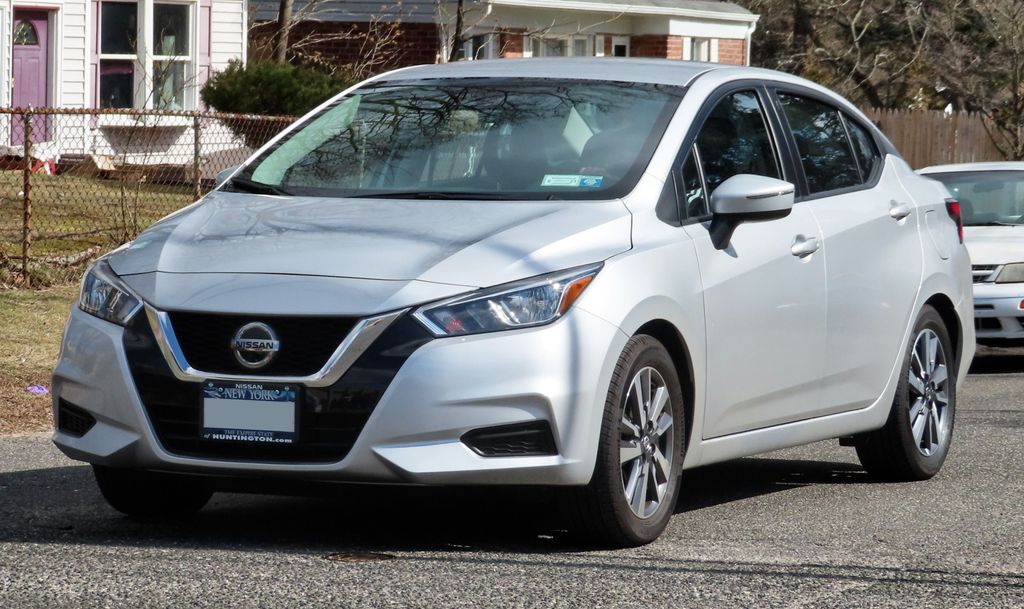
4. **2025 Nissan Versa (CVT) (35 mpg)**The 2025 Nissan Versa carves out a unique niche in the market, holding the distinction of being the cheapest car on this comprehensive list, with a starting MSRP of just $20,130—nearly $3,000 less than its closest competitor. Furthermore, it is the sole subcompact sedan remaining on sale in the U.S. without a hybrid or electrified powertrain, making it a critical choice for those seeking maximum affordability in a non-hybrid package. This accessibility makes it particularly attractive for budget-conscious consumers.
Despite its basic nature, the Versa offers surprising attributes that defy its entry-level positioning. It is significantly improved compared to the Mitsubishi Mirage, the model it outlasted in its dying segment, demonstrating that even at its price point, advancements have been made in refinement and usability. While it may appear as a relatively basic machine when compared to the compact cars it indirectly competes with on fuel economy, its efficient packaging contributes to a more spacious and civilized interior than one might anticipate from a subcompact vehicle.
This unexpected roominess makes it a good option for first-time car owners or those who require a dependable daily driver without excessive frills. The car provides ample space for its category, contrasting with its subcompact designation. Under the hood, the Versa is equipped with a 1.6-liter four-cylinder engine, generating 122 horsepower and 114 lb-ft of torque.
Although this engine is often described as “wheezy” and lacking in significant power, its smaller size and lighter overall vehicle weight allow it to achieve excellent fuel economy. With 32 mpg in the city and 40 mpg on the highway, resulting in a 35 mpg combined rating, the Versa certainly delivers on its promise of efficiency. Key advantages include its “excellent fuel economy” and “efficient packaging.” However, potential drawbacks include its “noisy cabin” at highway speeds and the fact that “Apple CarPlay and Android Auto cost extra,” which are important considerations for modern drivers.
Car Model Information: 2024 Nissan Versa 1.6 S
Categories: All set index articles, Articles with short description, CS1 Mexican Spanish-language sources (es-mx), CS1 Portuguese-language sources (pt), CS1 Spanish-language sources (es)
Summary: Nissan Versa is an automobile nameplate used by the Japanese manufacturer Nissan in the Americas for the following models:
According to a Nissan press release in 2008, “versa” is short for “versatile space” meant to imply the spaciousness of the interior and configurable cargo arrangements.
Get more information about: Nissan Versa
Buying a high-performing used car >>>
Brand: Nissan Model: Versa
Price: $19,444 Mileage: 7,761 mi.
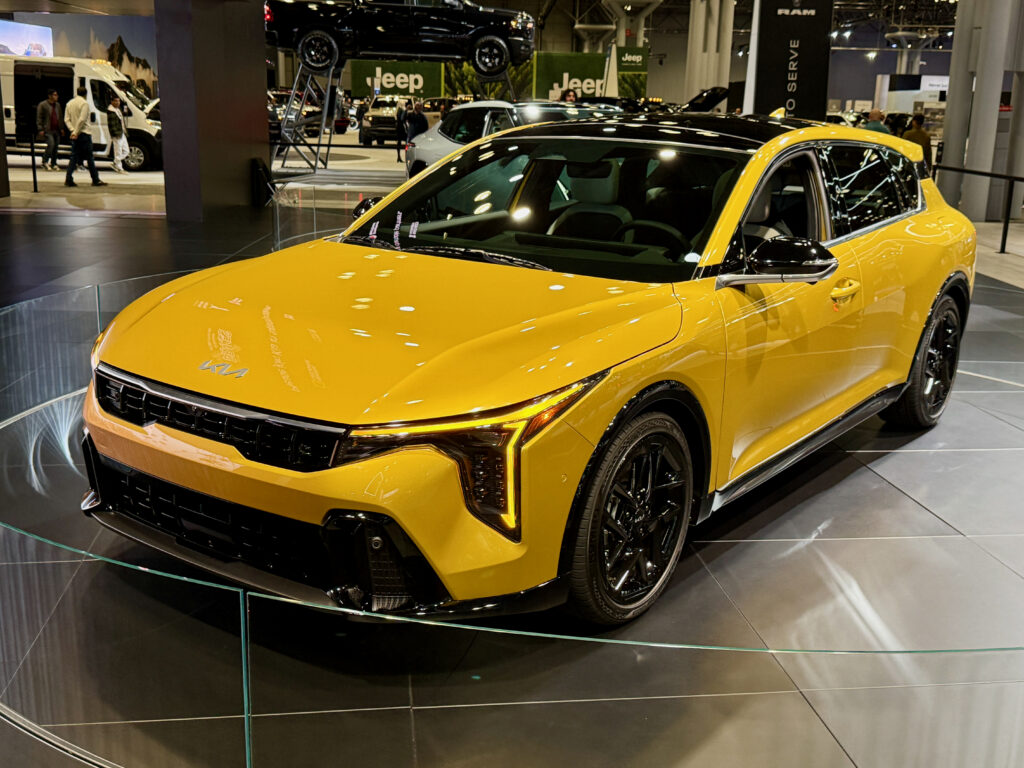
5. **2025 Kia K4 (34 mpg)**Kia makes a bold return to the compact car segment with the striking 2025 Kia K4, a vehicle designed to replace the Forte and establish a new, more impressive entry-level offering. The K4 immediately captures attention with its dashing exterior profile, showcasing a “serious futuristic aesthetic” that moves it far beyond mere basic transportation. This audacious styling, coupled with a generous list of standard features and a “big standard infotainment screen,” makes it a compelling choice for consumers seeking modern design and technology on a budget.
While the K4 presents a visually progressive and feature-rich interior, its approach under the hood is somewhat more technologically conservative. It is not engineered to win drag races, but rather to win hearts with its blend of style, practicality, and affordability. The focus here is on delivering a well-rounded compact experience that prioritizes value and everyday usability, proving that “more-than-basic” doesn’t have to mean breaking the bank for a new vehicle.
The vehicle is positioned as a significant “incredible upgrade” over the model it replaces, offering a modern compact car experience. This means drivers get a vehicle “filled with modern technology” and a “long list of standard features,” making it an attractive proposition for those seeking current amenities without a premium price tag. The K4 aims to redefine expectations for an entry-level compact, emphasizing its aesthetic and technological advancements.
The K4 is powered by a 2.0-liter 4-cylinder engine, which produces 142 horsepower and 132 lb-ft of torque. This powertrain allows the vehicle to achieve impressive fuel efficiency, with up to 40 mpg on the highway and a combined rating of 34 mpg. While these “carry-over powertrains won’t topple the best of the category just yet” in terms of raw performance, Kia’s strong entry comes with significant advantages like its “edgy, audacious styling” and “ample interior space.” However, consumers should note the “weak engine on most models,” “hidden rear door handles,” and a “plain cabin beyond screens” in some configurations, which are worth considering during evaluation.
Car Model Information: 2025 Kia K4
Name: Kia K4
Manufacturer: Kia
ModelCode: CL4
Production: 2024–present
ModelYears: 2025–present (North America)
Assembly: unbulleted list
Class: Compact car
Layout: Front-engine, front-wheel-drive
Engine: Petrol engine,Hyundai Smartstream engine#G3LE,Hyundai Smartstream engine#G4FM,Hyundai Smartstream engine#G4FP,Hyundai Smartstream engine#G4NS
Transmission: Manual transmission,Automatic transmission,8-speed automatic,Dual-clutch transmission,Continuously variable transmission
Related: Hyundai Elantra#CN7
BodyStyle: Sedan (automobile)
Platform: Hyundai-Kia K3 platform
Predecessor: ubl
Wheelbase: 2720 mm
Abbr: on
Length: ubl
Width: 1850 mm
Height: 1420 mm
Weight: convert
Caption: 2025 Kia K4 LX Sedan (Canada)
Drivetrain: Mild hybrid
Powerout: ubl
Categories: All Wikipedia articles written in British English, Articles with short description, CS1 Spanish-language sources (es), Cars introduced in 2024, Cars of Mexico
Summary: The Kia K4 is a compact car manufactured by South Korean automaker Kia. It was introduced in March 2024 as a replacement for the Forte/K3/Cerato, while the K3 nameplate was transferred to a subcompact car.
The car was first introduced on 21 March 2024, and was fully introduced on 27 March 2024, at the 2024 New York International Auto Show. It is available as a 4-door sedan and a 5-door hatchback.
Get more information about: Kia K4
Buying a high-performing used car >>>
Brand: Kia Model: K4
Price: $20,950 Mileage: 15,973 mi.
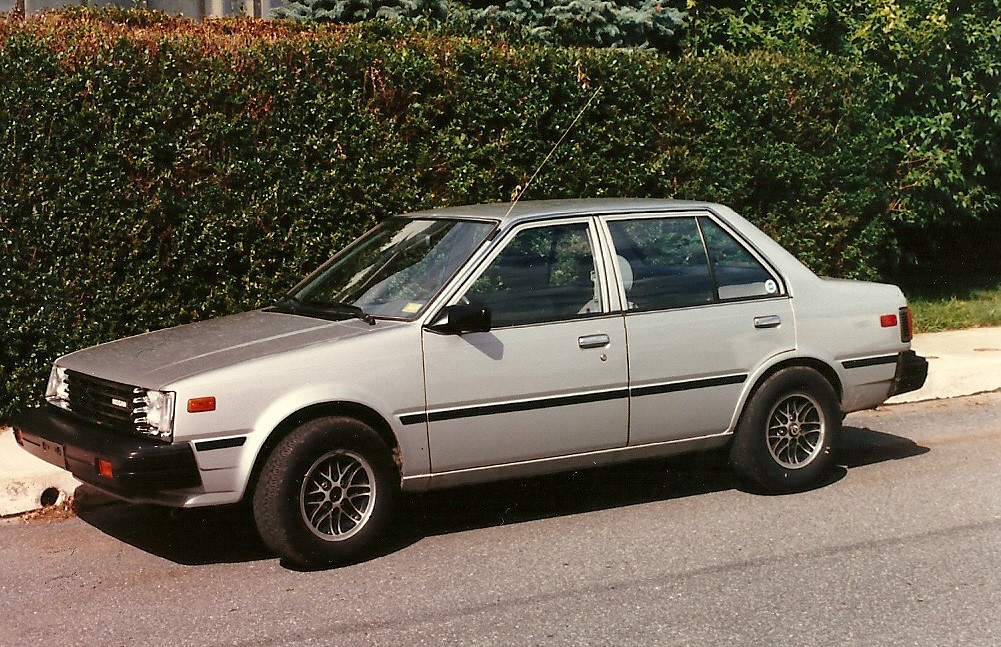
6. **2025 Nissan Sentra (34 mpg)**The 2025 Nissan Sentra positions itself as a remarkably accessible option within the compact sedan segment, distinguishing itself as the second cheapest sedan on our comprehensive list and the least expensive compact car overall. With a starting MSRP under $23,000, it presents a compelling value proposition for consumers seeking an economical entry into new car ownership without sacrificing aesthetic appeal. Its fuel efficiency, achieving up to 40 mpg on the highway, further underscores its budget-friendly credentials, making it an attractive choice for those prioritizing both cost savings and contemporary design.
While the Sentra offers an attractive exterior design and a favorable price point, a critical assessment reveals some areas where it trails its more established rivals. Its performance and handling characteristics are generally perceived as less refined compared to segment leaders such as the Honda Civic. The vehicle is strictly a front-wheel-drive offering with no hybrid variant, which, while keeping costs down, limits options for buyers seeking enhanced all-weather traction or further fuel economy gains.
Under the hood, the Sentra is equipped with a 2.0-liter 4-cylinder engine, generating 149 horsepower and 146 lb-ft of torque. This powertrain configuration contributes to its notable fuel economy ratings of 30 mpg in the city and 40 mpg on the highway, culminating in a combined rating of 34 mpg. While this engine provides adequate power for daily commuting, some drivers may find the acceleration to be sluggish, a common characteristic in this budget-conscious segment. The standard active safety suite is a significant advantage, providing peace of mind for occupants.
However, potential buyers should note that the Sentra, while offering good value and a long list of features, may not satisfy those seeking dynamic driving experiences or robust acceleration. Its primary strengths lie in its affordability, attractive styling for its segment, and commendable fuel efficiency, making it a sensible choice for drivers who prioritize practicality and cost-effectiveness in their daily transportation.
Car Model Information: 2024 Nissan Sentra S
Name: Nissan Sentra
Caption: 2021 Nissan Sentra SR (B18; Canada)
Manufacturer: Nissan
Aka: Nissan Sunny
Production: 1982–present
Class: Subcompact car
Predecessor: Nissan Sunny#B310
Categories: 1990s cars, 2000s cars, 2010s cars, 2020s cars, All Wikipedia articles written in American English
Summary: The Nissan Sentra is a series of automobiles manufactured by the Japanese automaker Nissan since 1982. Since 1999, the Sentra has been categorized as a compact car, while previously it occupied the subcompact class. Until 2006, Sentra was a rebadged export version of the Japanese Nissan Sunny, but since the 2013 model year, Sentra is a rebadged export version of the Sylphy. The Sentra nameplate is not used in Japan. Many other countries in Latin America sell their versions of the Sunny as the Sentra. In Mexico, the first three generations of the Sentra were known as the Nissan Tsuru (Japanese for crane), and the B13 model was sold under that name until 2017, alongside the updated models badged as Sentra.
In North America, the Sentra currently serves as Nissan’s compact car, despite being rated as a mid-size car by the EPA due to its interior volume since the 2007 model year. While previous Sentras were subcompacts, the Sentra has grown over the years, with the Nissan Versa having replaced the Sentra in the entry-level area.
The Sentra name was created for Nissan by Ira Bachrach of NameLab, and Bachrach describes the origin as “Nissan wanted consumers to understand that it was quite safe even though it was small. The word Sentra sounds like central as well as sentry, which evokes images of safety.”
Get more information about: Nissan Sentra
Buying a high-performing used car >>>
Brand: Nissan Model: Sentra
Price: $17,487 Mileage: 24,259 mi.
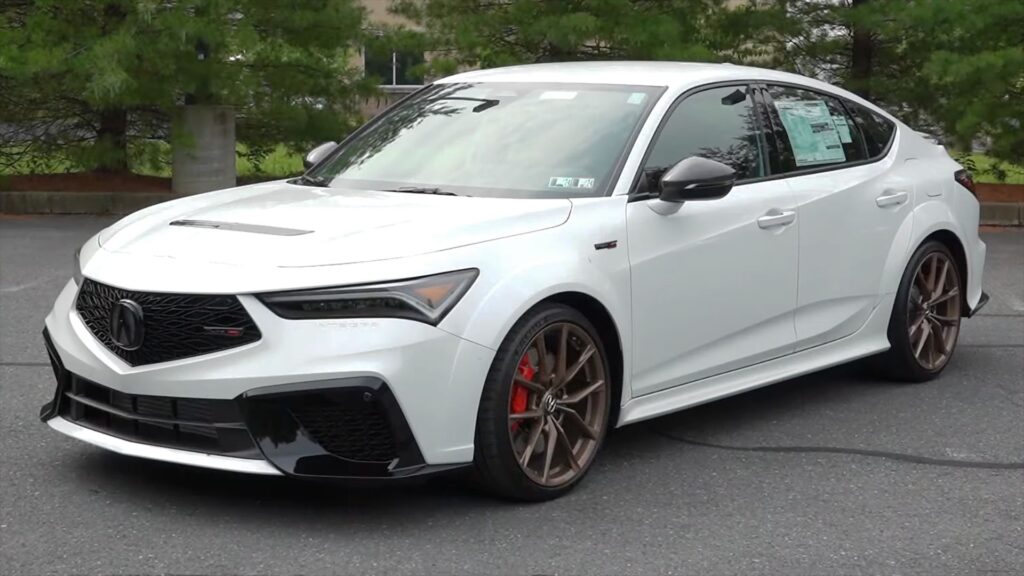
7. **2025 Acura Integra (33 mpg)**The 2025 Acura Integra distinguishes itself as the sole luxury brand entry on this list and holds the distinction of being its most powerful car. Leveraging the robust mechanical underpinnings of the Honda Civic, the Integra elevates the experience with enhanced power and more refined interior appointments, marking its position as an appealing entry-level luxury compact. Its attractive exterior design and inherent good value make it a notable contender for those seeking a blend of upscale features and practical efficiency.
Powering the Integra is a 1.5-liter turbocharged 4-cylinder engine, which delivers a substantial 200 horsepower and 192 lb-ft of torque. This powertrain ensures a genuinely engaging driving experience, providing more motive force than any other vehicle highlighted here. Regarding fuel economy, the EPA estimates figures of 30 mpg in the city and 37 mpg on the highway, culminating in a combined rating of 33 mpg. This is a commendable achievement for a car offering such performance, making it an efficient choice within its luxury-oriented segment.
However, the Integra also presents some trade-offs indicative of its entry-level luxury status. While it offers a refined experience, some drivers may find it carries a noticeable amount of road noise, suggesting that the available powerful sound system might be a worthy investment for a quieter cabin environment. Furthermore, it is exclusively offered in a front-wheel-drive configuration and does not include a hybrid option, which could be a limiting factor for buyers seeking enhanced traction or even greater fuel efficiency.
Despite these considerations, the Integra’s blend of power, efficiency, and luxury features positions it as a compelling option. Its excellent suite of safety features provides reassurance, while its direct connection to the reliable Civic platform instills confidence. For consumers seeking a spirited yet fuel-conscious luxury compact, the 2025 Acura Integra offers a distinctive and value-driven proposition.
Car Model Information: 2024 Acura Integra A-SPEC
Name: Honda Integra
Caption: 2002 Honda Integra Special Edition (DC5) in Australia.
Aka: Honda Civic (eleventh generation)
Manufacturer: Honda
Production: proper name
ModelYears: 1986–2006,2023–present
Assembly: Suzuka, Mie
Class: Compact car
BodyStyle: liftback,coupé
Layout: Front-engine, front-wheel-drive layout,Front-engine, four-wheel-drive layout
Predecessor: Honda Quint
Successor: ubl
Categories: 1990s cars, 2000s cars, 2020s cars, All articles with unsourced statements, All articles with vague or ambiguous time
Summary: The Honda Integra, sold in North America as the Acura Integra and later the Acura RSX, is an automobile produced by the Japanese company Honda from 1985 until 2006, and then since 2021. It succeeded the Quint as a more luxurious and sport-oriented derivative of the Civic. The Integra was one of the launch models for Acura in the US in 1986 alongside the Acura Legend. Throughout its production run, the Integra was highly regarded for its handling and performance. The 1995–2001 Integra Type R is widely regarded as one of the best front-wheel-drive cars of all time. The Integra nameplate was revived in 2021 after a 16-year hiatus. The Honda Integra nameplate is used for a restyled Honda Civic sedan for the Chinese market, while the Acura Integra nameplate is used for a Civic-based liftback for North America, replacing the Acura ILX.
Get more information about: Honda Integra
Buying a high-performing used car >>>
Brand: Acura Model: Integra
Price: $29,000 Mileage: 16,785 mi.
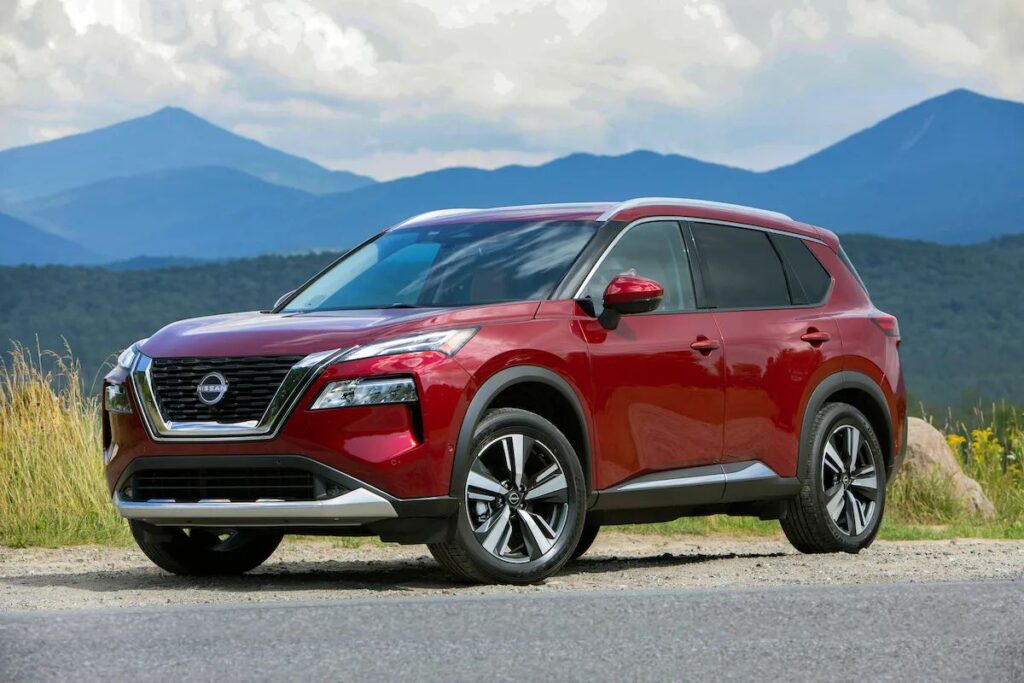
8. **2025 Nissan Rogue (33 mpg)**Breaking the sedan-dominated mold of this list, the 2025 Nissan Rogue emerges as the singular crossover, demonstrating how advanced engine technology can overcome the inherent aerodynamic challenges of an SUV to achieve impressive fuel efficiency. This vehicle employs a sophisticated variable-compression 1.5-liter turbocharged three-cylinder engine, a notable engineering feat that dynamically adjusts the compression ratio to optimize performance and fuel economy across diverse driving conditions. This innovative powertrain delivers 201 horsepower and 225 lb-ft of torque, showcasing a responsive performance that belies its three-cylinder configuration.
The Rogue’s commitment to efficiency is reflected in its EPA-estimated fuel economy ratings of 30 mpg in the city and 37 mpg on the highway, culminating in a combined rating of 33 mpg. This makes it a standout choice for consumers who require the versatility and elevated driving position of an SUV without incurring a significant penalty at the fuel pump. Beyond its efficient engine, the Rogue offers a spacious interior, catering to both passenger comfort and cargo capacity, making it a practical option for families and adventurers alike.
However, the Rogue is not without its compromises. A consistent observation is the presence of excessive road and tire noise, which can detract from the overall cabin refinement, especially during highway cruising. This acoustic characteristic is somewhat at odds with the advanced, refined nature of its innovative powertrain, potentially impacting the long-distance driving experience. Additionally, while the vehicle offers available Google built-in features, the base infotainment system is often described as merely “so-so,” suggesting that some technological amenities may require opting for higher trim levels.
Furthermore, it is important for prospective buyers to acknowledge that the 2025 Nissan Rogue does not offer a hybrid option. While its variable-compression engine technology makes it competitive within the non-hybrid SUV segment, the absence of an electrified variant limits choices for those seeking even greater fuel efficiency. Despite some reported reliability issues with its new engine technology, the Rogue presents a compelling package of innovation, space, and commendable fuel economy for a crossover.
Car Model Information: 2022 Nissan Rogue Sport SV
Name: Nissan Rogue
Caption: 2023 Nissan Rogue SV (US)
Manufacturer: Nissan
Aka: Nissan X-Trail
Production: 2007–present
ModelYears: 2008–present
Class: Compact crossover SUV
BodyStyle: SUV
Layout: Front-engine, front-wheel-drive layout
Predecessor: Unbulleted list
Categories: 2010s cars, All-wheel-drive vehicles, All articles containing circular references, All articles lacking reliable references, Articles lacking reliable references from November 2017
Summary: The Nissan Rogue is a compact crossover SUV produced by the Japanese automobile manufacturer Nissan. It made its debut in October 2007 for the 2008 model year. Beginning in 2013 for the 2014 model year, the model has been merged with the X-Trail sold outside the North American market, making them identical.
As of 2023, the Rogue was manufactured at the Nissan Smyrna Assembly Plant in Tennessee, United States and at the Nissan Motor Kyushu plant in Kanda, Fukuoka, Japan. Between August 2014 and March 2020, it was also built at the Renault Samsung Motors plant in Busan, South Korea under contract.
Get more information about: Nissan Rogue
Buying a high-performing used car >>>
Brand: Nissan Model: Rogue
Price: $19,995 Mileage: 37,243 mi.
Read more about: The Ultimate 2025 SUV Fuel Economy Showdown: How Top Models Perform on Long-Distance Journeys
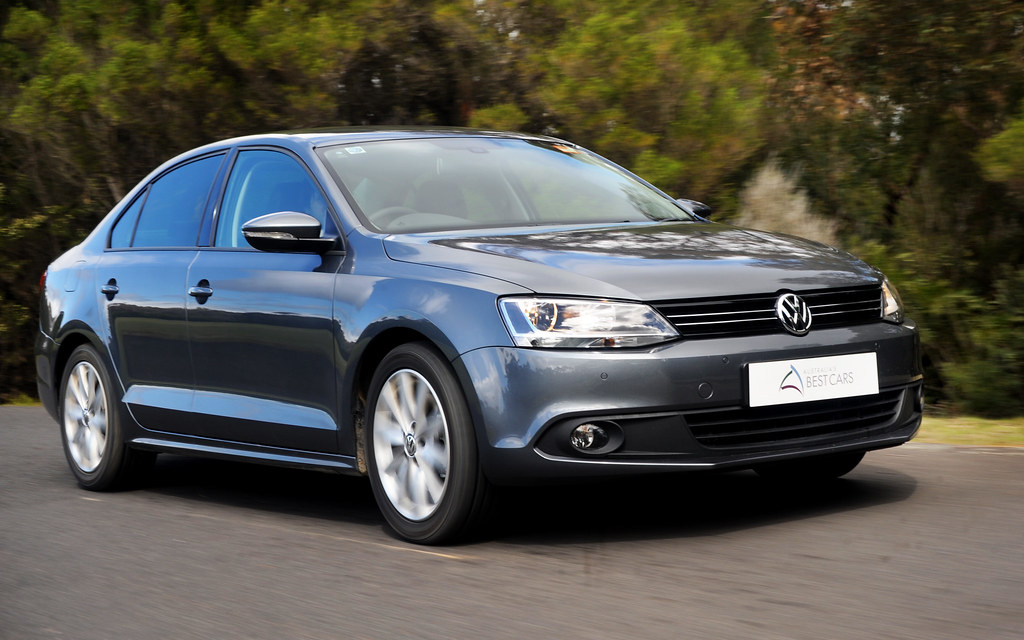
9. **2025 Volkswagen Jetta (33 mpg)**The 2025 Volkswagen Jetta presents a balanced offering in the competitive compact car market, positioning itself as a value-oriented sedan. While it may not consistently outperform rivals in every metric, it brings a respectable combination of attributes to the table, particularly for its affordable price point. Recent updates to its technology and styling aim to enhance its appeal, providing a more contemporary feel to a vehicle known for its practical strengths. Its strong points include a larger cabin than some competitors and improved interior materials, indicating a focus on passenger comfort and perceived quality.
Under the hood, the Jetta is powered by a 1.5-liter turbocharged 4-cylinder engine, which produces 158 horsepower and 184 lb-ft of torque. This powertrain, while not delivering an increase in raw power compared to previous iterations, is engineered for efficiency. It achieves EPA-estimated fuel economy ratings of 29 mpg in the city and an impressive 40 mpg on the highway, resulting in a combined rating of 33 mpg. This solid efficiency, combined with its affordable base MSRP of $23,220, makes the Jetta an economical choice for daily driving.
Despite these advantages, the Jetta faces criticism for aspects such as driving dynamics, which some might find to be less engaging than best-in-class compacts. There are also observations that its fuel economy, while still good, was even better in previous model years, leading to mixed results in its latest iteration. While the refreshed styling and tech offerings are positive steps, the overall driving experience can be described as somewhat “boring” by those seeking more athletic performance.
For consumers prioritizing interior space and affordability, the Jetta remains a viable option. Its updated features and comfortable cabin represent good value, even if it doesn’t set new benchmarks in performance or handling. The Jetta continues to occupy a niche for buyers who appreciate a straightforward, reliable, and fuel-efficient compact sedan from a European brand, without the premium price tag.
Car Model Information: 2011 Volkswagen Jetta SEL
Name: Volkswagen Jetta
Production: 1979–present
Class: Compact car
Sp: uk
Categories: 1980s cars, 1990s cars, 2000s cars, 2010s cars, All-wheel-drive vehicles
Summary: The Volkswagen Jetta () is a compact car/small family car manufactured and marketed by Volkswagen since 1979. Positioned to fill a sedan niche slightly above the firm’s Golf hatchback, it has been marketed over seven generations, variously as the Atlantic, Vento, Bora, City Jetta, Jetta City, GLI, Jetta, Clasico, and Sagitar (in China).
The Jetta has been offered in two- and four-door saloon / sedan and sometimes as five-door wagon / estate versions. Since the original version in 1980, the car has grown in size and power with each generation. By mid-2011, almost 10 million Jettas have been produced and sold all over the world. As of April 2014, Volkswagen marketed over 14 million, becoming its top selling model.
Get more information about: Volkswagen Jetta
Buying a high-performing used car >>>
Brand: Volkswagen Model: Jetta
Price: $9,961 Mileage: 46,722 mi.
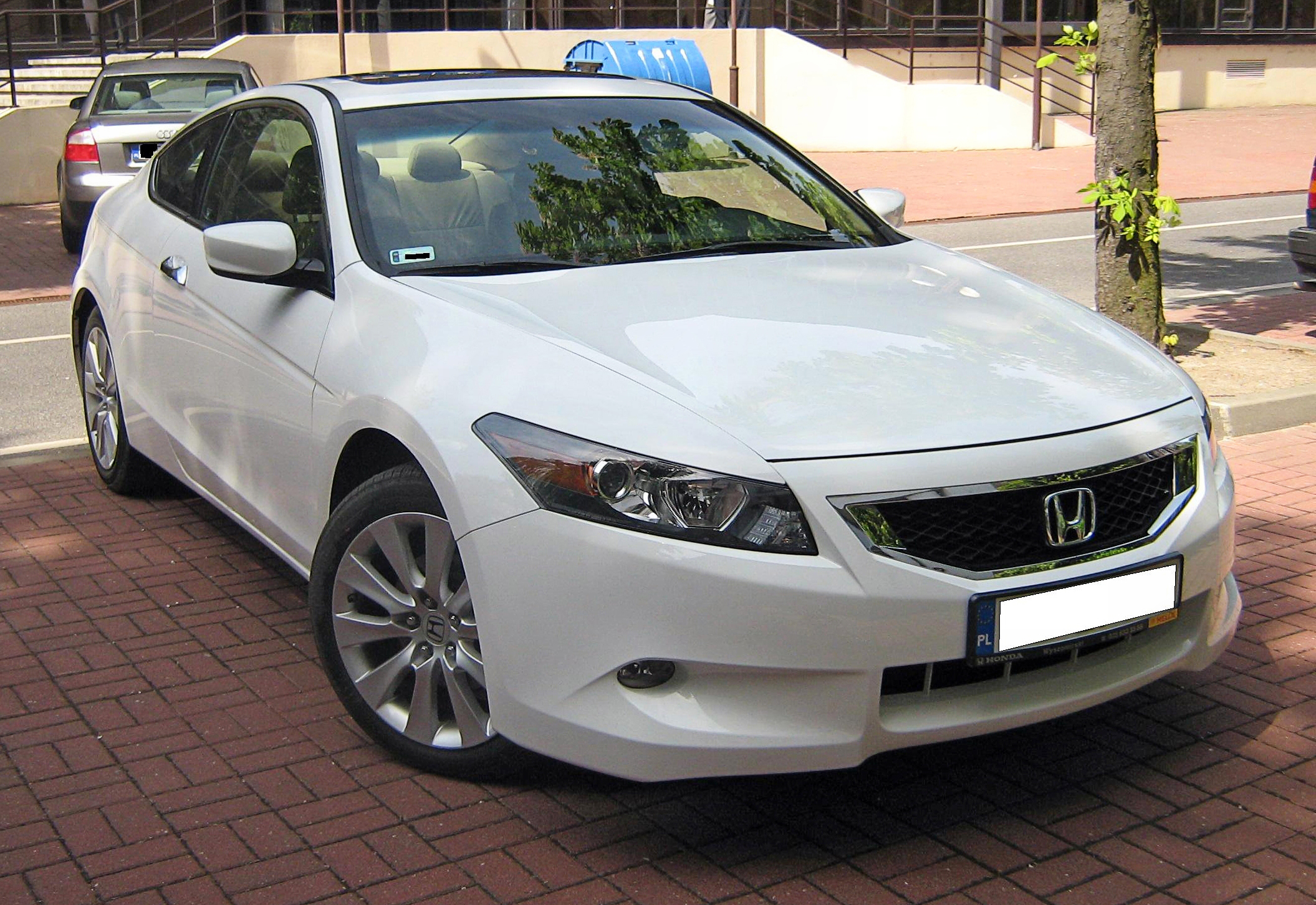
10. **2025 Honda Accord (32 mpg)**Concluding our examination of the most fuel-efficient non-hybrid vehicles, the 2025 Honda Accord stands out as a significant exception on a list predominantly occupied by smaller cars. As a midsize sedan, it delivers an impressive combined fuel economy of 32 mpg, a figure that rivals many compact cars and firmly establishes it as the most fuel-efficient midsize sedan available without electrification. This achievement is particularly noteworthy given its larger footprint and enhanced practicality, offering a compelling blend of size and economy.
The Accord is celebrated as an all-around overachiever for daily driving, combining good looks with ample interior and cargo space. Its generous legroom and trunk capacity surpass many class rivals, making it an exceptionally practical choice for families or individuals requiring substantial passenger and luggage accommodation. The standard 1.5-liter turbocharged 4-cylinder engine, producing 192 horsepower and 192 lb-ft of torque, contributes to its efficient performance, achieving 29 mpg in the city and 37 mpg on the highway. While enthusiasts might lament the absence of the previously available V-6 engines, the current powertrain strikes an excellent balance between power and frugality.
Inside, the Accord boasts a chic, Civic-esque interior design that provides a comfortable and upscale environment. However, some aspects warrant consideration, such as the relatively small touchscreen on lower trims and the observation that non-hybrid trims may lack a truly sporty feel. Additionally, the feature set can be somewhat limited on base models, suggesting that a move to higher trims might be necessary to access a fuller range of amenities. Despite these minor drawbacks, the Accord’s well-thought-out cabin and overall refinement contribute to a pleasant driving experience.
Ultimately, the 2025 Honda Accord continues its legacy as a strong contender in the midsize segment, proving that a larger vehicle can still deliver excellent fuel efficiency without resorting to hybrid technology. Its expansive interior, sophisticated styling, and economical powertrain make it an ideal choice for consumers seeking a practical, comfortable, and financially sensible daily driver, with the added benefit of a highly efficient hybrid option for those willing to invest more for even greater mpg.
Car Model Information: 2015 Honda Accord Sport
Name: Honda Accord
Caption: 2023 Honda Accord LX (US)
Alt: Front three-quarter view of a front-engined four-door car.
Manufacturer: Honda
Production: 1976–present
Class: Compact car
BodyStyle: hatchback
Layout: Front-engine, front-wheel-drive layout
Predecessor: Honda 1300
Categories: 1980s cars, 1990s cars, 2000s cars, 2010s cars, 2020s cars
Summary: The Honda Accord, also known as the Honda Inspire in Japan and China for certain generations, is a series of automobiles manufactured by Honda since 1976, best known for its four-door sedan variant, which has been one of the best-selling cars in the United States since 1989. The Accord nameplate has been applied to a variety of vehicles worldwide, including coupes, station wagons, hatchbacks and a Honda Crosstour crossover.
Get more information about: Honda Accord
Buying a high-performing used car >>>
Brand: Honda Model: Accord
Price: $17,961 Mileage: 58,521 mi.
Read more about: The Ultimate Guide: 15 Crossover SUVs Engineered to Surpass 270,000 Kilometers Without Major Breakdowns
As we’ve journeyed through this diverse lineup, it’s clear that the automotive industry continues to innovate, offering a robust selection of non-hybrid vehicles that defy expectations in fuel efficiency. From compact sedans that redefine value to a lone crossover showcasing advanced engineering, these 2025 models prove that drivers don’t have to compromise on traditional internal combustion power to achieve significant savings at the pump. Whether your priority is ultimate affordability, engaging driving dynamics, or spacious practicality, there’s a fuel-efficient gas-only car here designed to meet your needs and exceed your expectations for everyday economy. Choosing one of these remarkable vehicles means embracing a future where smart engineering delivers both performance and prudence, making every mile count.

